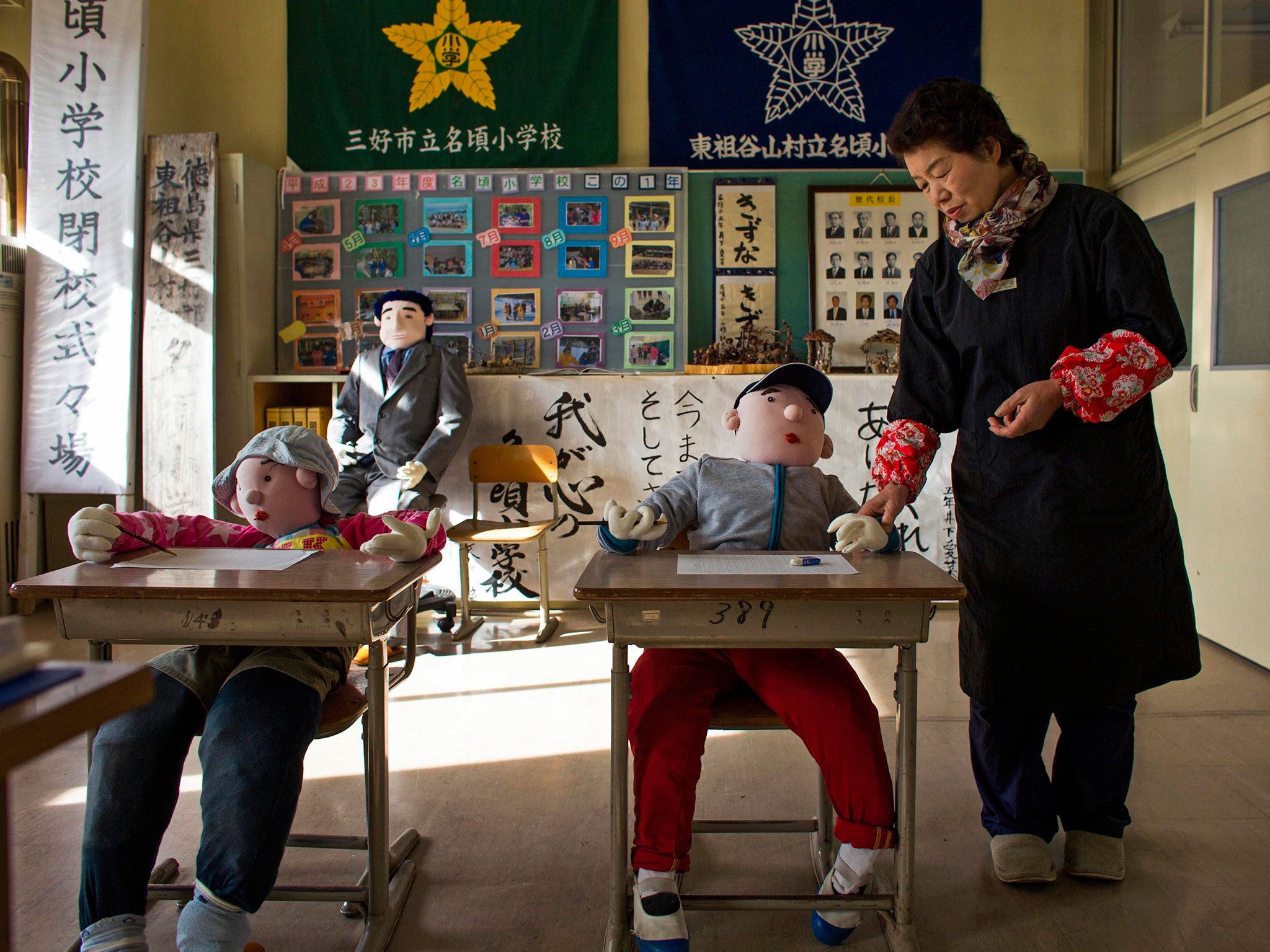Japanese woman fills village with life-size dolls to remember those who have died or moved on
Ayano Tsukimi's scarecrows try to recreate the bustling bygone days of Nagoro

When Ayano Tsukimi was young, there were hundreds of people in her village, Nagoro in southern Japan.
Now, there are only around three dozen people. Evem Tsukimi herself left the town for a number of years, returning a decade ago to look after her elderly father, and leaving her husband and daughter in Osaka.
During her childhood, the large dam in the area ensured a prosperous company and many workers. When Tsukimi returned, that was all gone, and she tried to start growing crops. When nothing sprouted, she decided the town needed scarecrows. She made one to look like her father.
Over ten years later, she has made over 350 such dolls which litter the deserted streets of the once bustling Nagoro: they sit on park benches, in school classrooms, sleep in trees and pretend to be fishing.
"When I make dolls of dead people, I think about them, when they were alive and healthy," Tsukimi told filmmaker Fritz Schumann in a short documentary last year. "The dolls are like my children."
The old school shut down around three years ago, with just one teacher and two students. Now, the school is full of people, with students, teachers and a principal made by Tsukimi. One of the teachers sits at a piano in one of the classrooms.
Tsukimi began placing the dolls at the entrance of the valley to entice visitors, and the village has become a notable local attraction, with tourists taking pictures of scarecrows that appear to work in the fields and wait for imaginary buses.
In pictures: Valley of dolls in Nagoro, Japan
Show all 10"The facial expressions are the hardest part," Tsukimi told Schumann. "The lips are difficult. A little tweak and they can look angry. I’m very good at making grandmothers. I pull the strings at the mouth and they smile."
Tsukimi says she tries to make the dolls not appear weird, but she is aware they are not to everyone's taste.
"Not everybody likes my dolls, I think, even if they don’t say it directly. Some may feel frightened because they look so real."
Of course, even if Tsukimi tries to make her village appear more populated than it actually is, her dolls have less longevity than those who once lived in Nagoro and moved on.
"The dolls don’t live as long as humans," she said. "They can live up to three years max."
Subscribe to Independent Premium to bookmark this article
Want to bookmark your favourite articles and stories to read or reference later? Start your Independent Premium subscription today.

Join our commenting forum
Join thought-provoking conversations, follow other Independent readers and see their replies